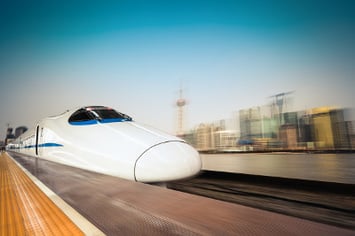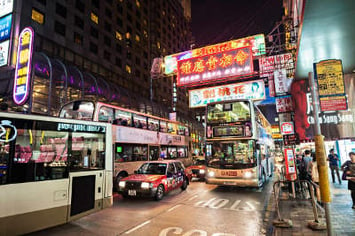If you ever come to China, you might be surprised to find that China has one of the most advanced and efficient transportation networks in the world. A major overhaul of the country’s infrastructure in recent decades has made traveling domestically easier and cheaper than ever. Let’s take a look at some of the most common ways your China QC team is getting from point A to B.
High Speed Trains in China
One of the most impressive feats in Chinese innovation is the extensive High Speed Rail (HSR) network recently constructed. Trains along this line help travelers get across this vast country in only a matter of hours. Many such trains can travel up to 300km per hour (186 miles per hour). It’s now possible to travel from Beijing to Guangzhou in under 10 hours by train for the price of a little over $100 USD.
Although high speed train travel may seem to take much longer than flying, it can save passengers a lot of time, especially those travelling a shorter distance. One of the major perks travelers enjoy from by riding the high speed train is conveniently avoiding long and stressful lines at the airport. Passengers aboard the HSR only need to arrive at the station about 30 minutes before departure, as compared to arriving at the airport two hours or more before a flight. Another advantage HSR travel has over flying is that train stations are generally located in city centers, whereas airports are often located on the outskirts in more remote areas. The convenience of arriving in a downtown area not only helps your China QC team coordinate more efficiently, but it also helps you visit factories in different cities with ease.
Buses in China
When traveling medium distances through less developed parts of China and smaller cities where high speed trains are not an option, the next best option is usually to take a long distance bus. There are two types of long distance buses: a fast, business-class-like bus and a long distance sleeper bus. The business class bus is generally a more comfortable ride than the sleepers, mainly due to how sleepers are designed for passengers with a shorter, smaller frame. Sleeper buses  can be fairly uncomfortable for longer trips and can get pretty cramped when filled to capacity.
can be fairly uncomfortable for longer trips and can get pretty cramped when filled to capacity.
Your China QC team will often utilize local buses for shorter routes or when a subway is not available. For example, you might have product inspectors in Shenzhen that need to travel to a factory in Foshan for an inspection. They are likely to first take a high speed train from Shenzhen to Guangzhou, a nearby major city. From there, they might take the Guangzhou subway as far as it leads in the direction of Foshan before transferring to a bus or car to take them the rest of the way.
Taxis/Private Cars in China
Taxis can be found almost anywhere in China, no matter how small a town is. In the case of not being able to find a taxi, locals can usually provide numbers for private drivers. The drivers of these private cars, or “black” taxis, tend to overcharge passengers, particularly foreigners. But they are sometimes the only option available. For most of the bigger cities, you can actually use Uber and other Uber-like services to call for a private car service in lieu of black taxis. These are very convenient, inexpensive and commonly used by our own product inspectors when they are in a hurry to get from one place to another.
Motor Bikes and Scooters in China
One of the riskier transportation options for traveling short distances in China is hopping on one of the many motor bikes and electric scooters commonly scattered throughout cities and country sides. This mode of transportation is not recommended due to safety concerns. Many drivers of motor bikes and scooters recklessly disregard traffic rules in order to get to their destination a few seconds faster – not unheard of in the West but especially true in China. In order to ensure the personal safety of our inspectors, they are forbidden to ride motor bikes and electric scooters under any circumstances.
Conclusion
Travel to and from service locations is an integral part of every product inspector's daily life. Your QC team in China benefits from a multitude of transportation methods suited for both long and short-distance travel. Whether they take a high speed train, a bus or a private car or taxi, your inspectors are able to get to the factory that makes your product faster than ever before. And as China’s labor costs continue to rise, you can at least count on the fact that more efficient transportation will help to lower your inspection and audit costs.






